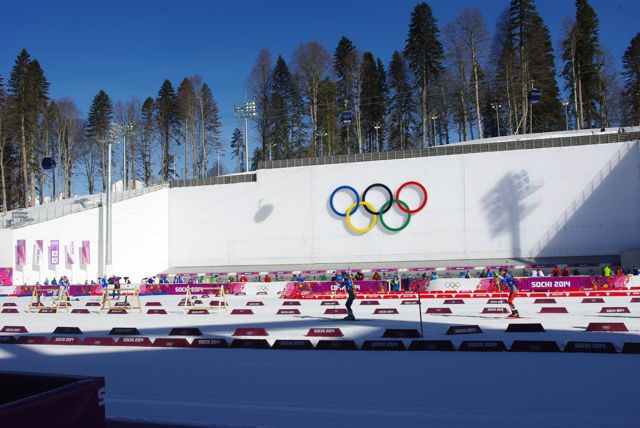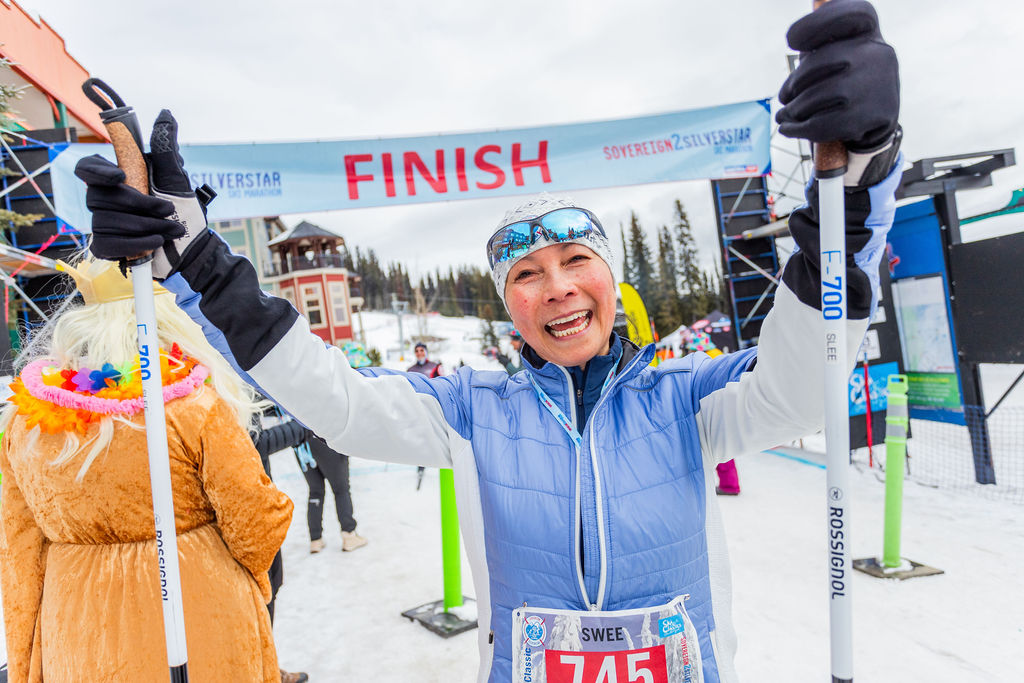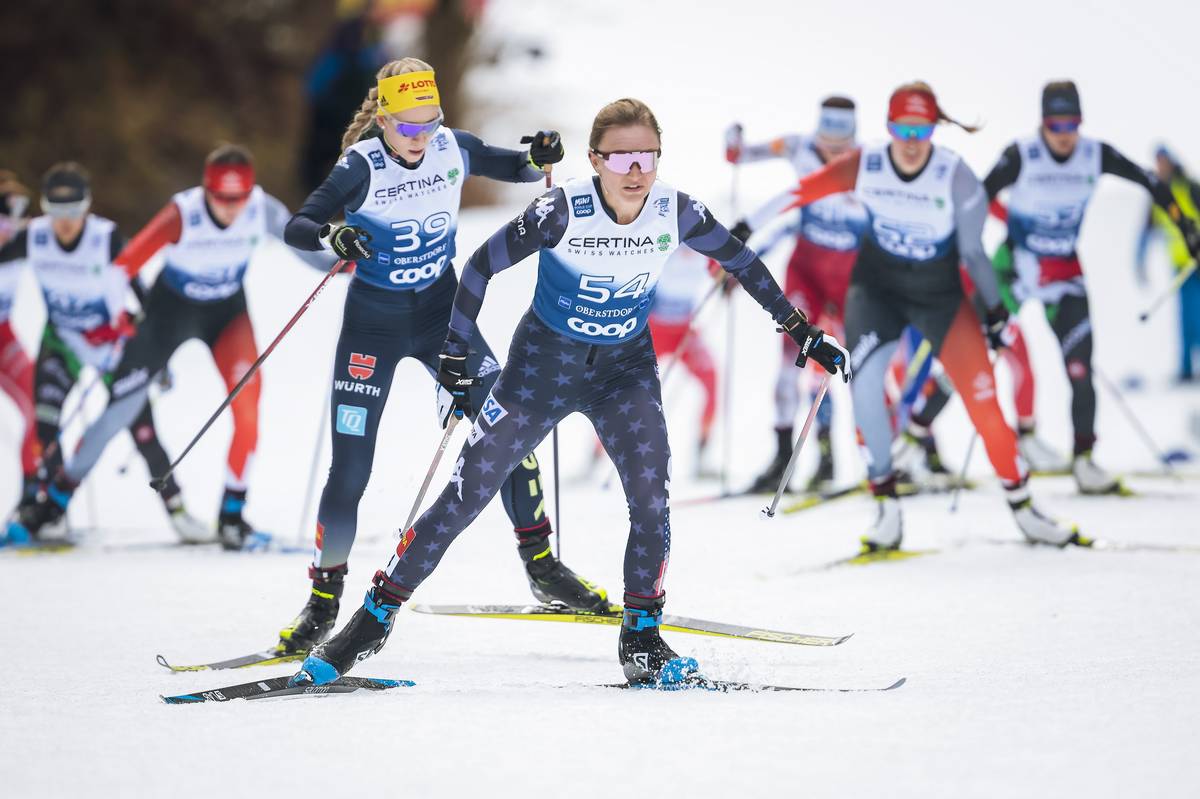
FasterSkier’s coverage is made possible through the generous support of Rudy Project.
SOCHI, Russia – It was a gleaming, beautiful day in the Laura Biathlon Stadium as the world’s best biathletes made their final preparations before the Olympics.
The mood couldn’t have been better on Friday as the sun sparkled on the snow, the mountains rose up in all their glory across the valley, and the unstable weather that has sometimes characterized this venue in the past was nowhere to be seen.
After arriving this week, some athletes were pushing to restore a sense of normalcy before they have their Games debuts: the men start in a 10 k sprint race on Saturday, while the women compete in a 7.5 k sprint on Sunday.
“It was a really fast entry with arriving early, early Wednesday morning, and then getting our clothes organized and figuring out the village,” Canada’s Rosanna Crawford told FasterSkier. “Days just kind of flew by. I think it will be nice to get into the competition and have everything calm down and get back into that normal routine.”
In the last few days, the athletes have had to get used to courses which have been tweaked slightly since the International Biathlon Union hosted the World Cup here for the first time last season. At those opening races athletes complained about dangerous downhills, and a video of a horrendous crash by Russia’s Maxim Tsvetkov went viral.
Crawford said that the downhill had been cut out of the Olympic courses, but all of the climbs remain the same.
Another adjustment came just this morning, to the 2.5 k loop which will be used by the women in the sprint race.
U.S. Biathlon President and CEO Max Cobb is also the technical delegate for the Olympics, and explained what happened in an email to FasterSkier.
First, there was an easy fix to a basic mistake: “The Organizing Committee set up the start line in the wrong place for the TV test yesterday, so we fixed that today,” Cobb wrote.
But another problem came when Norwegian coach Per Arne Botnan complained that based on the GPS measurements athletes and coaches took while training, the course seemed to be too short.
“With the snow on the courses they all measured out shorter than the survey which was made in October by IBU and the Organizing Committee,” Cobb said. “As a normal part of our work we always check the length. It showed that the 2.5 k was too short. Some of this was that the inside radius was again not set up as planned by the Organizing Committee. We were able to reconfigure the course to add 175 m [of length] and 10 m of total climb before the women’s training today.”
Crawford said that the hardest climb would come directly out of the stadium, where athletes face a huge hill as they ascend to high above the shooting range.
“The climbing is all at the start of the loop and it’s downhill all the second half,” she said.
“It’s a gradual downhill to the range, a good entry. I love this range.”
Besides the downhill range approach, the shooting range in Sochi has an even more unique feature: it is surrounded by tall retaining walls, a feature not replicated in any other World Cup venue. On their tallest side, the walls are several stories high and as a result, wind is cut to a minimum.
“For sure, I would say overall that it’s quite an easy range,” Canadian head coach Matthias Ahrens said. “It’s quite protected from the wind. The training days we have had very little wind. So for sure here you have to shoot well.”
That could be a bit of a disadvantage for athletes who tend to triumph over windy conditions. For instance, Ahrens said, his athlete Megan Imrie is “very sharp in reading wind,” and that might not come into play so much in the Olympic races.
But overall he was positive about how his team would deal with the range.
“But I’m actually quite happy because the way we trained the previous two weeks, first in Antholz and then in Seefeld, now we feel we have had very similar conditions and we actually had really good shooting,” he said. “Hopefully that gave the athletes confidence that it translates to the same thing here.”
The large range and its walls translate to an strong echo on the sound of the shots, and a different sensation altogether for athletes gauging their hits and misses by ear.
“The way it hits the target definitely sounds a little bit different,” Crawford said. “The misses are a little more heartbreaking than in a normal range. It’s just a really big thunk.”
Other unusual factors are the fact that in Russia, rifles have to be locked up at the venue and athletes cannot take them away. That makes cleaning them, for instance, somewhat inconvenient – either an extra trip to the stadium, or prolonging a training session. Usually, a task like cleaning could be done in a more relaxing manner in an athlete’s hotel room.
Biathletes also incorporate “dry firing” into their daily routines. This is when they aim their rifle, with no ammunition, at a set of five black dots, usually drawn on a paper taped to the wall. Despite the fact that the gun isn’t shooting anything, the athletes can go through the mechanics of their shooting process and practice their mental focus.
Now, to do this, they have to actually go to the stadium.
“You really have to plan out your day if that’s something that you want to do, because it takes a while to get over here,” Crawford said. “We all have keys to our lockers and you have to sign your rifle out, and then sign your rifle back in. Every other World Cup other than Russia you can just have them with you. I haven’t been dry firing every day – the boys definitely dry fire more than the girls do. I’ve been spending more time on the range, rather than dry firing.”
Despite some changes in routine, Crawford said that she and the Canadians are feeling good for the Games, thanks in part to a good pre-Olympic training camp in Italy and Austria.
“There was lots of good snow, so we did a ski from Dobbiaco to Cortina which was incredible,” Crawford said. “Then we went to Seefeld, and luckily they had just gotten a big dump of snow so the skiing was just amazing. I had never been there before and there are just so many trails. I skied for two hours one day and didn’t do the same trail twice. It was pretty awesome.”
Chelsea Little
Chelsea Little is FasterSkier's Editor-At-Large. A former racer at Ford Sayre, Dartmouth College and the Craftsbury Green Racing Project, she is a PhD candidate in aquatic ecology in the @Altermatt_lab at Eawag, the Swiss Federal Institute of Aquatic Science and Technology in Zurich, Switzerland. You can follow her on twitter @ChelskiLittle.



